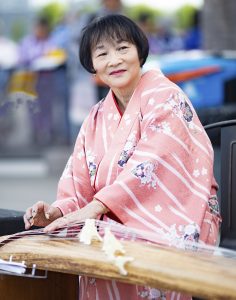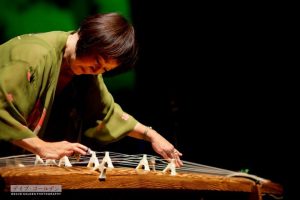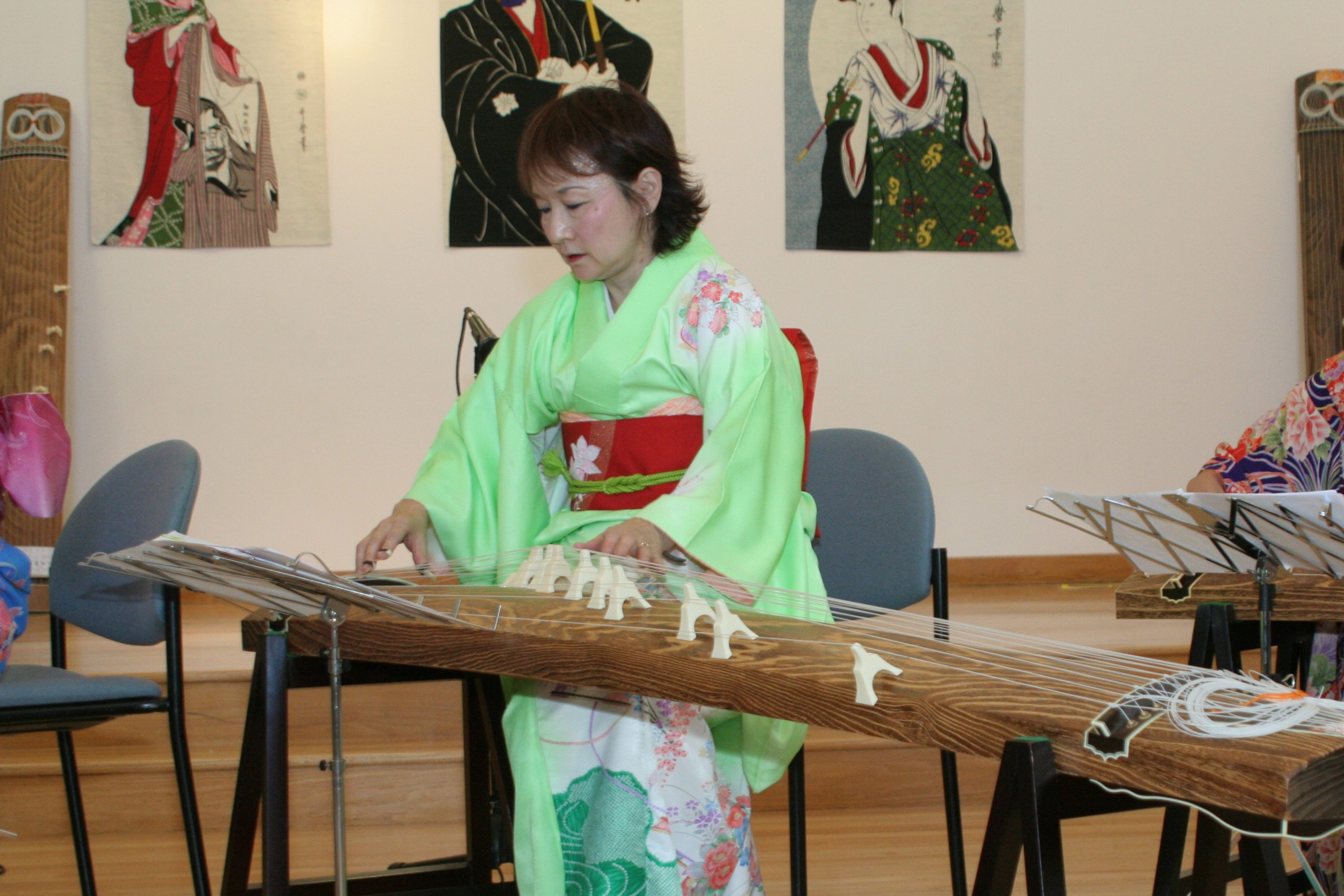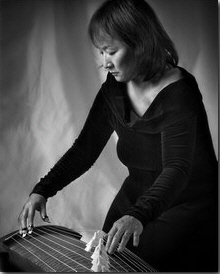
Shirley Kazuyo Muramoto



Shirley Kazuyo Muramoto
Shirley Kazuyo Muramoto – Koto musician, teacher, band leader, filmmaker
Shirley Kazuyo Muramoto was born and raised in the San Francisco Bay Area, a fourth generation American of Japanese descent. In 1976, Shirley received her “Shihan” degree (instructor’s license) with “Yushusho” (highest) honors from the Chikushi School in Fukuoka, Japan, and her “Dai Shihan” Master’s degree from the same school in 2000 for her mastery and dedication to the koto.
“The koto is an extremely versatile instrument,” says Shirley. “Though it seems limited and simple in nature with only 13 strings, it’s possible to extract a myriad of textures and sounds through various techniques and tunings, and even percussive rhythms by incorporating the body of the instrument itself. The koto is initially easy to play, but it really takes years of practice to be able to produce a good sound.”
Shirley’s musical influences include koto masters Chikushi Katsuko, Kudo Kazue, Sawai Kazue, June Kuramoto and Kimio Eto. Growing up in Oakland, she enjoyed R&B and jazz music, and also played the violin in youth symphonies all through her public school years which nurtured an appreciation for European and American classical music.
A dedicated musician for over 50 years, Shirley strives to involve diverse genres of art and music in her performances. She teaches students privately and taught classes in koto music at public schools and at universities. She also composes her own koto pieces and is the leader of the world jazz fusion group, the Murasaki Ensemble.
For many years, Shirley has had an interest in researching Japanese traditional arts in the World War II concentration camps. Shirley’s mother learned to play the koto as a 10-year-old child at Topaz and Tule Lake camps. Shirley wondered if others had similar experiences in these camps being exposed to and learning cultural arts. This research took so long to gather because survivors of these camps were understandably hesitant to talk about their experiences, and more so about anything Japanese practiced in the camps. These arts helped those incarcerated to be resilient and survive. In 2012, a National Park Service, Japanese American Confinement Sites grant was awarded to her project, “Hidden Legacy: Japanese Traditional Performing Arts in the World War II Internment Camps”. This project turned her decades-long research into a documentary film, completed in June 2014. Hidden Legacy has been shown nationally on public TV and PBS stations, screened at numerous community showings, and at universities in Japan and Europe, as well.
Through her research, Shirley is dedicated to supporting traditional arts in the United States and throughout the world. Traditional arts are part of the American cultural fabric brought here by immigrants and becoming part of the American art scene. She continues to teach, demonstrate and perform in honor of those who came before her. In the summer of 2020, she presented a virtual series entitled “NextGen Geijutsuka: Future Stars of Japanese Arts”, featuring young up-and-coming artists who have shown dedication and commitment to keeping up the cultural arts. “I feel that each of us has a history and ancestors who came before us, and it’s important to acknowledge that and pay respect to it. It’s what makes each of us very special and unique.”